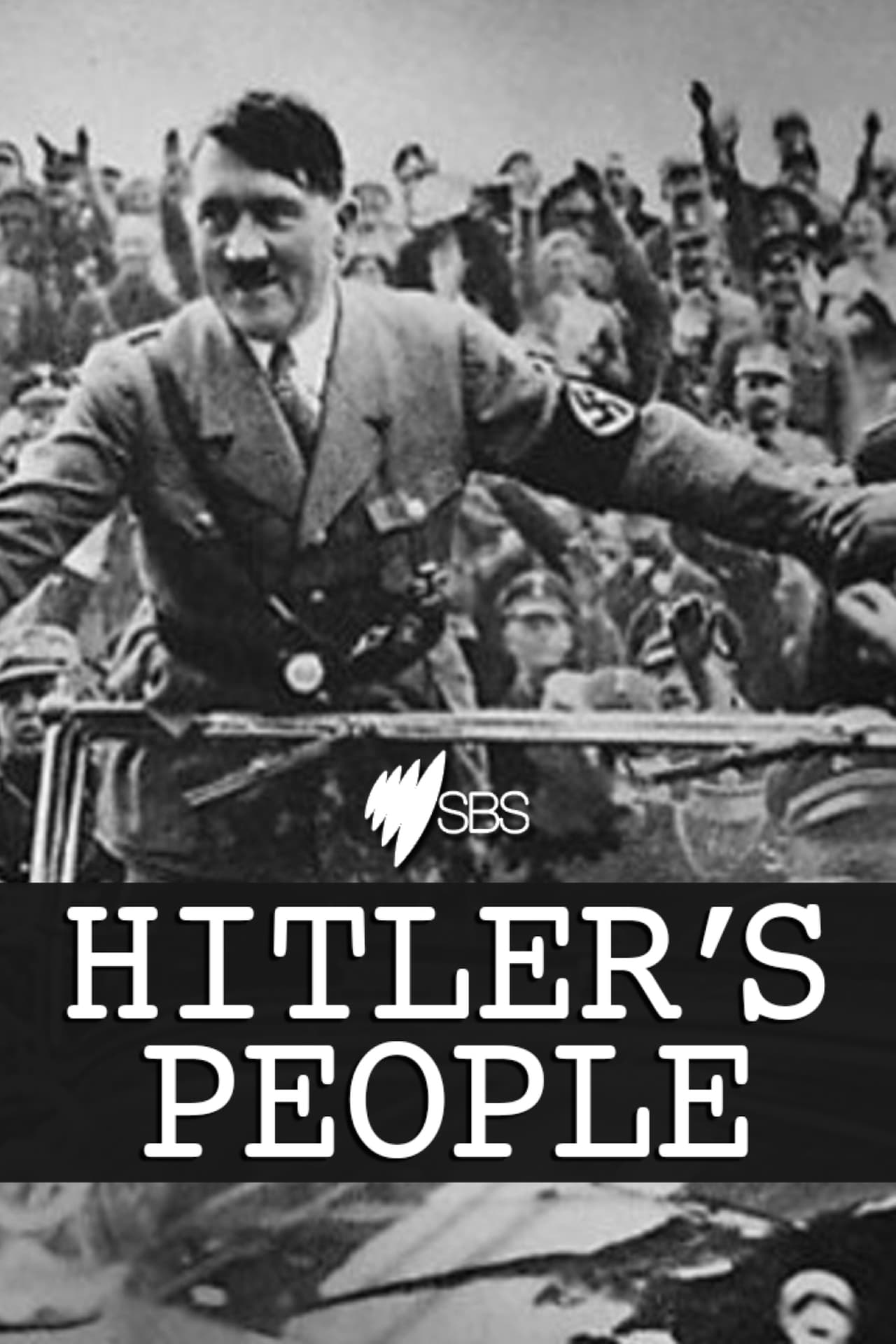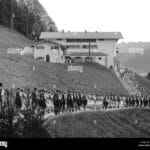The documentary *Hitler’s Handmaidens*, released in late May 2024 and available on Apple TV, Prime Video, Sky Go, and Now TV, confronts the complex and often uncomfortable reality of women’s roles in Nazi Germany. It’s a narrative far removed from simple binaries of good and evil, revealing a spectrum of experiences ranging from active collaboration to quiet resistance. This analysis delves into the documentary’s portrayal of these diverse roles, situating it within the broader historical context and acknowledging the ongoing scholarly debates surrounding this multifaceted period.
Women of the Third Reich: Beyond the Stereotypes
Hitler’s Handmaidens shines a light on the multifaceted roles women played in Nazi Germany, a narrative far more nuanced than simple notions of victimhood or active complicity. The documentary explores how Nazi ideology, social pressures, and individual choices intertwined to shape the experiences of women during this period. By examining these interwoven factors, we can gain a deeper understanding of a challenging and often overlooked aspect of the Third Reich.
The Allure and Illusion of the “Aryan Ideal”
Nazi propaganda meticulously crafted an idealized image of the “Aryan woman”: a pure, fertile mother, wholly devoted to family and the nation. This constructed ideal, however, clashed sharply with the reality of many women working in factories and industries vital to the war machine. This inherent contradiction reveals the manipulative nature of Nazi ideology, which simultaneously celebrated traditional domesticity while demanding women’s labor for the war effort. How did women navigate this double standard? Were their actions driven by genuine belief, fear, ambition, or a complex interplay of these factors? These questions lie at the heart of understanding their experiences.
From Collaboration to Complicity: A Spectrum of Involvement
Hitler’s Handmaidens doesn’t shy away from depicting women’s active participation in horrific acts. The documentary presents accounts of female guards in concentration camps, nurses involved in cruel medical experiments, and other individuals whose roles directly contributed to the Nazi regime’s atrocities. This challenges simplistic narratives that portray women solely as passive bystanders. However, the documentary also explores a wide range of involvement, from those who were ardent supporters of the Nazi party to those who silently accepted the regime’s actions, and those whose daily lives subtly challenged Nazi aims. The film prompts difficult questions: Where do we draw the line between complicity and survival? What constitutes true collaboration? The answers, likely, are complex and varied.
Unsung Heroines: Resistance and Defiance in the Shadows
While the documentary primarily focuses on collaboration and complicity, it also offers glimpses into acts of resistance. However, these instances are arguably underrepresented, suggesting a need for further exploration. The film hints at women who secretly aided persecuted individuals, sabotaged the regime’s operations, or otherwise defied Nazi authority. This raises crucial questions: How widespread was female resistance? How many women risked their lives to oppose the Nazis? Further research is critically needed to fully illuminate this vital, yet often overlooked, aspect of the historical narrative. Books such as The Light of Days, for example, powerfully illustrate the contributions of Jewish women in the Polish resistance.
Critical Reception and Availability of Hitler’s Handmaidens
Released on May 28, 2024, and available on streaming services such as Apple TV, Prime Video, Sky Go, and Now TV, Hitler’s Handmaidens has received mixed reviews. While some praise its efforts to bring untold stories to light, others criticize potentially sensationalistic episode titles, such as “Female Fuhrer’s” and “Nazi She-Devils,” arguing that they might oversimplify the complexities inherent in the subject matter and potentially introduce bias. The documentary’s IMDB rating currently stands at 5.6/10, which suggests a degree of controversy surrounding its interpretation of events.
Historical Context and Expert Perspectives
To fully grasp the women’s stories depicted in Hitler’s Handmaidens, one must consider the broader historical context. The documentary’s value lies not just in showcasing individual narratives, but in prompting critical reflection on the socio-political environment that shaped women’s choices. The work of historians like Wendy Lower and others provides invaluable insights for interpreting these events and evaluating the documentary’s claims. A deeper exploration of the psychological factors driving individual actions would also enrich the understanding of these complex issues.
Enduring Relevance and Lessons for Today
The lessons of Hitler’s Handmaidens extend far beyond the historical context of Nazi Germany. The documentary serves as a potent reminder of the perils of unchecked authority, extreme ideologies, and the pervasiveness of complicity. It also sparks vital conversations about women’s autonomy, societal pressures, and the ongoing fight for gender equality. The film’s impact, likely, will be felt not in definitive answers but in the questions it raises – questions that touch upon the dynamics of power, responsibility, and the enduring struggle for justice. How can we prevent such atrocities from being repeated? What are the subtle mechanisms of complicity today? These vital questions remain at the forefront today.
Assessing the Documentary: Strengths and Limitations
Strengths: Hitler’s Handmaidens brings many untold stories to light, utilizing compelling visuals and narratives.
Weaknesses: The documentary could benefit from a more thorough investigation into the specific motivations driving individual actions, as well as a more balanced representation of resistance movements. Incorporating a wider range of expert opinions from historians with diverse perspectives would further strengthen its historical accuracy and objectivity.
In conclusion, Hitler’s Handmaidens serves as a compelling starting point for exploring the multifaceted roles of women in the Third Reich. It provokes important discussions about responsibility, complicity, resistance, and the enduring legacy of the Nazi regime. But the film’s impact likely rests not on providing definitive answers, but on stimulating further inquiry and prompting a critical engagement with complex and challenging historical issues. The documentary’s value lies in its potential to encourage deeper and ongoing research and a more nuanced exploration of this critical period. The ongoing research will continue to reveal new understandings of this profoundly complex historical period.
Beyond the Screen: Unveiling Untold Stories of Women in the Third Reich [https://www.lolaapp.com/]
The complexities of Hitler’s Handmaidens highlight the limitations of any single documentary when endeavoring to capture the full spectrum of women’s experiences during the Third Reich. While providing a valuable starting point, the need for further in-depth exploration remains crucial.
Deconstructing the “Aryan Woman”: Beyond the Propaganda
The Nazi regime’s idealized image of the “Aryan woman”—the pure, fertile mother dedicated to family and the state—was nothing more than propaganda, a carefully constructed illusion designed to maintain control. The reality, however, was far more diverse. Many women contributed directly to the war effort, working in factories and industries. But were their actions solely driven by conformity, or did they harbor personal thoughts and beliefs that defied the official narrative? Documentaries such as Hitler’s Handmaidens, while aiming to grapple with these complexities, may inadvertently oversimplify these intricate realities; there is a need for a detailed, individual focus.
The Multifaceted Realities of Women’s Experiences
The women of the Third Reich cannot be understood as a monolithic group. Some actively participated in the regime’s atrocities, while many more became victims, suffering alongside members of other persecuted groups. Simultaneously, a significant number bravely resisted the regime, risking their lives to aid those in need. Understanding the women’s motivations requires analyzing individual circumstances and considering various perspectives. Were some driven by blind faith, were others influenced by fear, or did differing degrees of conviction and loyalty play a role? The answers are unlikely to be simple and will probably vary greatly. What was their degree of agency within the system? Each situation demands careful consideration.
Resistance in the Shadows: Uncovering Hidden Narratives
The narrative of female resistance during the Third Reich remains often under-represented, frequently overshadowed by accounts of more overt defiance. However, recent research helps recover the courageous acts of women, revealing their resourcefulness and resilience. This accounts for the significance of books like The Light of Days, which powerfully illuminates the bravery of Jewish women in the Polish resistance. Their strength and determination serve as an inspiration and a powerful reminder of the human spirit’s capacity for resistance, reminding us of the ongoing requirement for exploration and discovery.
Critical Engagement with Media Representations
It is imperative to adopt critical thinking when analyzing media representations of history, including those presented in films and documentaries. Historians and scholars must carefully examine the narrative choices of filmmakers, including what is emphasized and what is omitted. This includes analyzing how the filmmakers’ biases, consciously or unconsciously, influence the story being told. Media products are frequently interpretations rather than objective accounts, and that fact must be accounted for. A comprehensive understanding can only be achieved through the careful consideration of various sources.
Connecting the Past to the Present: Lessons for Today
The experiences of women during the Third Reich serve as a critical reminder of the ongoing struggles against gender inequality, the threat of unchecked extremism, and the importance of individual choice. Even in the face of overwhelming oppression, individuals can demonstrate agency and make a difference. This understanding allows us to develop a greater appreciation for the enduring fight for justice and equality; it also allows us to protect ourselves against the potential resurgence of similar ideologies. Their struggles act as a critical warning of the dangers of silence in the face of oppression.
The Ongoing Pursuit of Knowledge
Research into the lives of women in Nazi Germany is a continuous process. Historians are constantly uncovering new information, revisiting existing evidence, and refining our understanding of this multifaceted period. The information we have today may well be further refined tomorrow. The responsibility of continuously investigating this history is ongoing, and requires collaboration to ensure these stories are remembered, respected and properly understood. The pursuit of understanding is itself a vital part of the history.
Hitler’s Handmaidens: Collaboration, Complicity, and the Complex Roles of Women in Nazi Germany [https://www.lolaapp.com/]
Hitler’s Handmaidens offers a compelling, albeit incomplete, view into the wide range of experiences women endured in Nazi Germany. While showcasing women involved in various facets of Nazi society, from administrative roles to participation in horrific atrocities, it’s still only one facet of a multifaceted situation. A richer understanding requires a more expansive framework.
The Nazi regime’s manipulation extended to a carefully constructed image of the “ideal Aryan woman,” a vision which significantly influenced the choices women made. The social and economic pressures to conform—to maintain social status and personal safety—were immense. It is vital to recognize these constraints in evaluating the decisions women made.
World War II’s impact on the economy unintentionally opened new doors for many women in the workforce, challenging traditional gender roles but also introducing severe constraints. While contributing to the war effort, women often faced limited opportunities for advancement or fair compensation, reflecting the pervasive gender inequality of the time. Did these economic realities significantly encourage participation in the regime, or could they have inadvertently fostered a degree of agency, despite such constraints?
A framework that examines collaboration, complicity, and resistance allows for a more nuanced analysis of individual stories. Many women actively supported the Nazi ideology, while others participated out of fear or societal pressure. Some benefited indirectly from the regime without actively participating in atrocities; others, courageously resisted, risking everything to offer support to those persecuted by the regime. The motivations of these courageous women, and the risks they assumed, demand further investigation.
Scholarly debate and differences of opinion persist regarding women’s agency within this repressive context. Some scholars argue that societal pressures and Nazi propaganda severely restricted women’s individual choice. Others argue that, even within this oppressive system, individual choice remained an important element. The debate remains open, with the documentary itself facing criticism for its approach to certain events. A fair assessment considers all points of view.
The study of women’s roles during the Third Reich offers significant insights into the pervasive nature of totalitarian ideologies, complicity in various forms, and the importance of acknowledging individual agency within systems of oppression. Further research, which includes analyzing personal diaries, letters, and oral histories, will likely continue to provide fresh perspectives and expand our understanding of this dark period in history. Our current understanding is but a fraction of the whole picture, and many questions still require investigation. This includes questions of the extent to which women’s actions were driven by ideology, fear, or other aspects.
The complexities of their experiences serve as a reminder of the importance of considering individual agency, societal pressures, and the subtle ways individuals become involved in acts of oppression. The lessons from this history remain relevant to current discussions of power, responsibility, and the ongoing struggles for gender equality.
From Aryan Ideal to Atrocities: A Critical Examination of Women’s Roles in the Nazi Regime [https://www.lolaapp.com/]
The Nazi regime’s carefully crafted image of the ideal German woman – blonde, blue-eyed, and focused on family and nation – served as a powerful instrument of control. This image, consistently reinforced through various forms of media, aimed to restrict women’s ambitions, confining them to traditional roles. These images, however, only partially reflected the diversity of lived experiences during the Third Reich.
The inherent contradictions within the regime’s expectations of women highlight the manipulative nature of Nazi propaganda. While women were encouraged to bear many children, their opportunities for education and career advancement remained severely limited. This disparity underscores how the regime utilized a simplistic image to justify its repressive policies and maintain control.
The demands of the war effort unexpectedly expanded the role of women in the workforce—a significant departure from traditional roles. Women filled essential positions in factories, hospitals, and other industries, making undeniably vital contributions to the war machine. Nonetheless, the idealized image of the supportive homemaker persisted, largely overshadowing their contributions and minimizing their importance.
The persistent expectations surrounding women’s roles, even amid increased participation in the workforce, remained firmly rooted in Nazi ideology. Women were expected to provide unwavering support to the regime, nourishing future soldiers and maintaining the home front. This reinforced image served to bolster the morale of both the soldiers and the nation.
The participation of some women in the regime’s horrific atrocities represents a particularly challenging aspect to reconcile. Some women served as guards in concentration camps, others held administrative positions that actively supported the regime’s abhorrent actions. The reasons behind these actions were almost certainly multifaceted, likely a consequence of deeply ingrained ideological beliefs shaped by years of propaganda, significant social pressure, and possibly, personal ambition.
It is critical to remember that such participation did not represent the experiences of all women in Nazi Germany. Many women did not participate in such horrors. However, the extent to which some did participate requires careful study and requires appropriate acknowledgment.
Alongside these dark realities, however, lay accounts of resistance and remarkable bravery. Many women defied the regime, sometimes subtly, sometimes overtly. They risked their lives to hide those persecuted by the regime, supported resistance movements, or simply refused to accept Nazi ideology. These acts of defiance offer a potent counterpoint to the darker aspects of women’s experiences, emphasizing individual agency and moral courage.
The women of Nazi Germany represent a complex and multifaceted group. The ideal of the “Aryan woman” was a tool of control, but it failed to capture the complete picture of their lives. A complete understanding requires considering ideology, societal pressures, personal choices, and possibilities for resistance. It is a story of both complicity and courage, demanding a nuanced perspective which avoids simplistic generalizations. This is an ongoing process of investigation and research that requires continuous exploration and debate. The lessons of this history serve as critical reminders of the dangers of unchecked authority and the importance of individual responsibility in the face of oppression.
| Role | Description | Implications |
|---|---|---|
| Idealized Aryan Woman | The propaganda-driven image: domestic, fertile, devoted to family and nation. | Limited opportunities, reinforced traditional gender roles, tool of social control |
| Wartime Worker | Filled essential roles in factories, hospitals, etc. due to male conscription. | Vital contribution to war effort, but often marginalized and underappreciated. |
| Complicit in Atrocities | Involved in administration, guard duties at death camps, or other atrocities. | Complex motivations: ideology, social pressures, ambition. Requires careful study. |
| Resistance Fighter | Defied the regime, helped victims, actively resisted Nazi ideology. | Showcased bravery, individual agency and moral courage in the face of oppression. |
The legacy of women’s roles during the Nazi era is a complex one, and is still being studied and debated. The complete understanding of this aspect of history continues to evolve as new information and evidence are discovered.
- Unveiling the Enigma: Mansoureh Khojasteh Bagherzadeh’s Public Appearances & Private Life in Iran - July 18, 2025
- Unveiling the Mystery: Mansoureh Khojasteh Bagherzadeh’s Husband: A Rare Glimpse into a Private Life - July 18, 2025
- Unveiling Masoud Khamenei’s Mother: Power, Influence, and Iran’s Future - July 18, 2025
















